Search
Search Results

Image
Celtic Turoe Stone
The Celtic Turoe Stone, 1st century BCE. Covered in vegetal designs, the significance of the stone is not known but it likely had a sacred significance and probably once stood at a sacred site. Bullaun, County Galway, Ireland.

Image
Figures & Head Columns from Celtic Roquepertuse
Seated figures and stone columns with niches for human heads or skulls from a Celtic religious site at Roquepertuse, France. 3rd century BCE. (Musée d'histoire, Marseille, France)
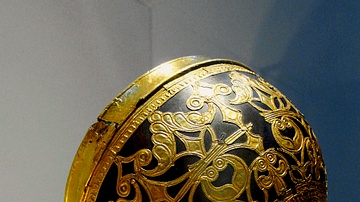
Image
Celtic Bowl, Schwarzenbach Burial
A Celtic bowl with embossed gold leaf decoration from the princely burial at Schwarzenbach, Rhineland, Germany. 5th century BCE. (Staatliche Museen zu Berlin)
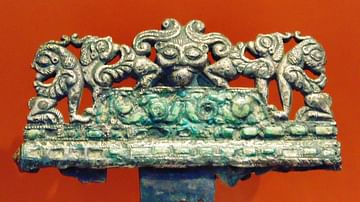
Image
Celtic Belt Buckle
Celtic belt buckle, 5th century BCE.
Rheinisches Landesmuseum Trier, Germany.

Image
Celtic Art in Woods by Ailwee Caves, County Clare, Ireland
One of the many wooden figures and other objects depicting Celtic figures or motifs in the woods surrounding Ailwee Caves, County Clare, Ireland.
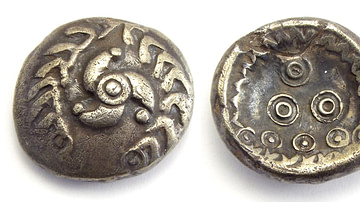
Image
Celtic Regenbogenschüsselchen
An example of a Celtic coin known as a regenbogenschüsselchen of southern Germany and Bohemia. Electrum, 5th-1st century BCE.

Image
Celtic Bronze Fastener
A Celtic bronze fastener, 7th century BCE. (Archaeological Museum of Como, Italy)
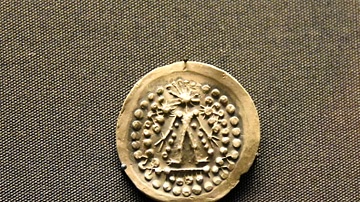
Image
Celtic Coin from Thrace Copying Greek Inscription
Early Iron Age Celtic people copied Greek coins, often faithfully reproducing their designs and inscriptions. This suggests that Thracian die-engravers were illiterate, as legible Greek letters were gradually replaced by abstract patterns...
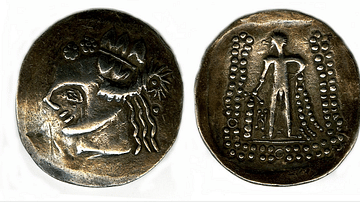
Image
Celtic Coin Showing Hercules
A Celtic coin from the Iron Age Balkans. Silver, 2nd-1st century BCE. The obverse shows Dionysos while the reverse shows a stylised Hercules holding a club and lion skin. (British Museum, London)

Image
Celtic Penannular Brooch
A Celtic penannular brooch from Burgos, Spain. Made prior to the 1st century CE (Iron Age). Made of a copper alloy. Diameter: 5 cm. (British Museum, London)